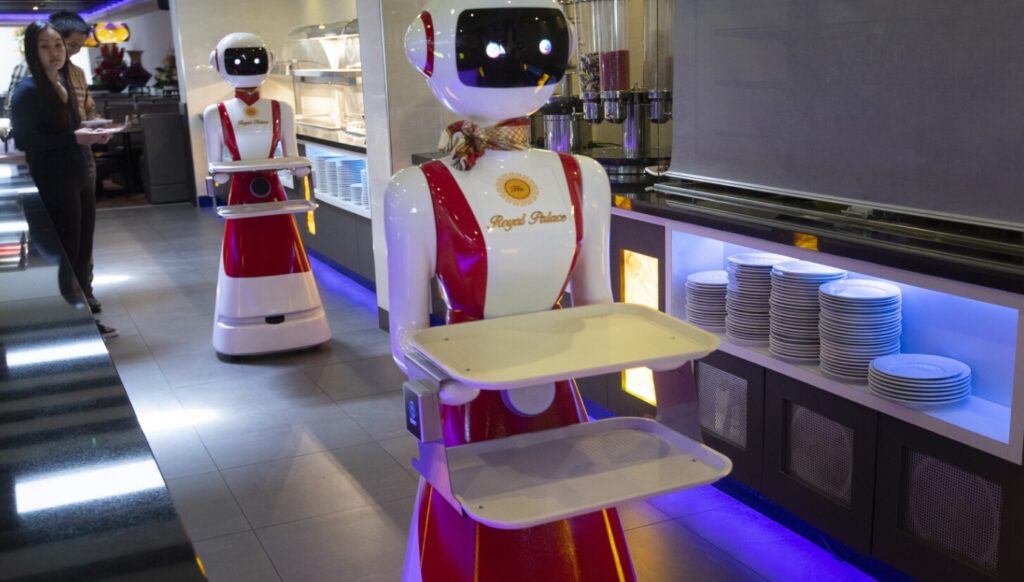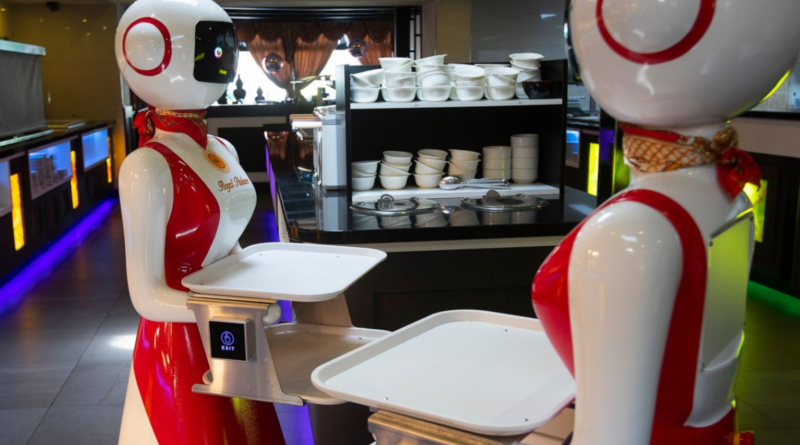The Rise of Robots in the Restaurant Industry
In recent years, the restaurant industry has witnessed a significant transformation with the integration of robots into various aspects of its operations. From food preparation to customer service, robots are revolutionizing the way restaurants operate. This article aims to explore the multifaceted impact of robots in the restaurant field, covering technological advancements, economic implications, societal concerns, and future prospects.
Technological Advancements: Advancements in robotics technology have paved the way for the widespread adoption of robots in the restaurant industry. These robots come equipped with sophisticated sensors, cameras, and artificial intelligence algorithms, enabling them to perform a wide range of tasks with precision and efficiency. In the kitchen, robots can assist chefs with tasks such as chopping vegetables, flipping burgers, and even cooking complex dishes. Some restaurants have fully automated kitchens where robots handle the entire cooking process from start to finish.
In addition to kitchen tasks, robots are also being deployed in front-of-house operations to enhance customer service. Robotic servers can greet customers, take orders, and deliver food to tables, reducing the need for human waitstaff. These robots are equipped with interactive touchscreens or voice recognition technology to communicate with customers effectively. Furthermore, robotic bartenders are gaining popularity in bars and lounges, capable of mixing cocktails with precision and flair.
Economic Implications: The adoption of robots in the restaurant industry has both positive and negative economic implications. On one hand, robots can help restaurant owners reduce labor costs by automating repetitive tasks and increasing operational efficiency. With robots handling mundane chores, human workers can focus on more skilled and creative aspects of their jobs, leading to higher productivity and job satisfaction.

However, the widespread deployment of robots could also lead to job displacement for restaurant workers, particularly those employed in entry-level positions such as kitchen staff and servers. As restaurants increasingly rely on automation, there is a growing concern about the long-term impact on employment levels and income inequality. Moreover, the initial investment required to implement robotic systems can be substantial, posing a barrier to entry for smaller restaurant owners.
Societal Concerns: The integration of robots in the restaurant industry raises various societal concerns, ranging from issues of job displacement to ethical considerations. As robots replace human workers, there is a risk of widening socioeconomic disparities and exacerbating unemployment rates, particularly among low-skilled workers who may struggle to find alternative employment opportunities.
Furthermore, there are ethical concerns surrounding the treatment of robots in the workplace. While robots are designed to perform tasks efficiently, they lack the emotional intelligence and empathy that human workers possess. This raises questions about the ethical implications of replacing human interaction with robotic assistance, particularly in customer-facing roles where empathy and understanding are crucial.
Moreover, there are concerns about the potential for robots to malfunction or cause harm to customers or employees. Despite rigorous testing and safety protocols, there is always a risk of technical glitches or programming errors that could result in accidents or injuries. As such, it is essential for restaurant owners to prioritize safety and implement robust risk management strategies when deploying robots in their establishments.
Future Prospects: Looking ahead, the future of robots in the restaurant industry appears promising, with continued advancements in robotics technology driving innovation and adoption. As robots become more sophisticated and affordable, we can expect to see further integration into all aspects of restaurant operations, from food preparation to customer service.
Moreover, the COVID-19 pandemic has accelerated the adoption of robotics in the restaurant industry, as businesses seek solutions to minimize human contact and ensure compliance with health and safety regulations. Robots are increasingly being used for tasks such as contactless food delivery, sanitization, and temperature screening, helping restaurants adapt to the new normal of the post-pandemic world.
Furthermore, the rise of autonomous vehicles and drone technology presents new opportunities for the restaurant industry. Restaurants can leverage these technologies to offer delivery services with greater speed and efficiency, bypassing traditional transportation challenges and reducing delivery times.
Conclusion: In conclusion, the integration of robots in the restaurant industry represents a transformative shift that has the potential to reshape the way we dine and interact with food establishments. While robots offer numerous benefits in terms of efficiency, productivity, and innovation, they also pose challenges in terms of job displacement, ethical considerations, and safety concerns.
As we navigate this new era of automation and robotics, it is essential for stakeholders in the restaurant industry to strike a balance between harnessing the potential of technology and addressing the societal implications. By embracing responsible innovation and prioritizing the well-being of both employees and customers, restaurants can leverage the power of robots to enhance the dining experience while ensuring a sustainable and inclusive future for all.
